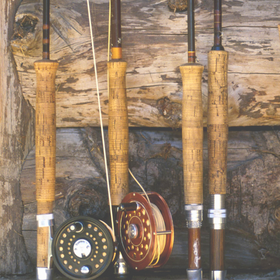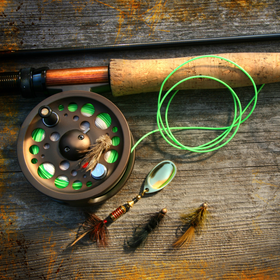Yes you can enjoy carp fly fishing
The world of fly fishing is a changing one. It sees new flies, new gadgets, improved rods and reels, and techniques. These techniques are more and more often being applied to different species of fish. As fly fishing has almost nothing to do with actually eating fish anymore, fly anglers are more open to honing their skills against species of fish they will never eat. One of these species is carp. Yes carp. Long considered a trash fish, the evolution of the sportsman has seen re-classification of fish species. As more and more pressure erodes some of our cherished fisheries, fly anglers have turned to carp and other species as a chance to practice our passion while easing the pressures of traditional fly angling eco-systems.
Carp fly fishing has taken on a cult appeal, and that cult is growing. Like bass, carp are plentiful, like bass carp can be found in ponds just a hair larger than a mud hole, while bass have long been a venerable game fish, carp have not. Carp were never considered pretty, although passionate carp anglers around the Great Lakes consider them beautiful, so as with most things beauty is in the eye of the beholder. I don't think they probably taste particularly good. But they do fight, and they do grow huge. And they love the warm water, but are also found in cold water.
Carp are survivors, they tend to stalk the shorelines and flats of lakes, where they have little competition, for sight-fishing there is none better. Similar to fishing for bonefish in technique, the most likely success will come from sight fishing. However, here lies the rub, carp are very skittish and alert, and will run or cease feeding at the slightest disturbance. I prefer to cast to carp to the left or right of me, I do not like to position myself directly in front. An accurate soft cast one to two feet in front of your intended target is your best bet. Two to three casts is probably all you get, for they will notice you and move on. Allowing your fly to fall to the bottom, works well, and then giving your fly a soft tug. Carp key in on puffs of silt, as that indicates food. The angler must keep their leader tight here, as the carp's 'strike' can be maddeningly light.
As for gear, think big. Carp are not to be pursued with your 3 wt. Think salmon gear if you have it, 9 or 10 weight rods, but depending on the average size of the carp in your area, you might get away with 7 or 8 weight. With lots of backing on the reel. Tippet should be at least 3x, and more comfortably 2x or even 1x.
As for flies, well the nice thing about carp is they are not overly selective, but your best bets are always with actual food imitations that the fish eat. For carp, crayfish, damsel and dragonfly nymphs are all good bets. Scuds and hare's ears are likely prospects as well. And by all means do not forget that lake standby the leech, a sunken leech tugged neatly off the bottom, is a morsel only the wariest of carp will ignore.
After the strike the real fun is beginning, carp fight like nothing else. They are strong, smart, and tireless. An angler netting a carp knows it has met a match that is not likely to be experienced again soon. They will strip you down to your backing faster than any other fish out there. And not back down easily.
Visit our Flies by Species - Carp Selection




